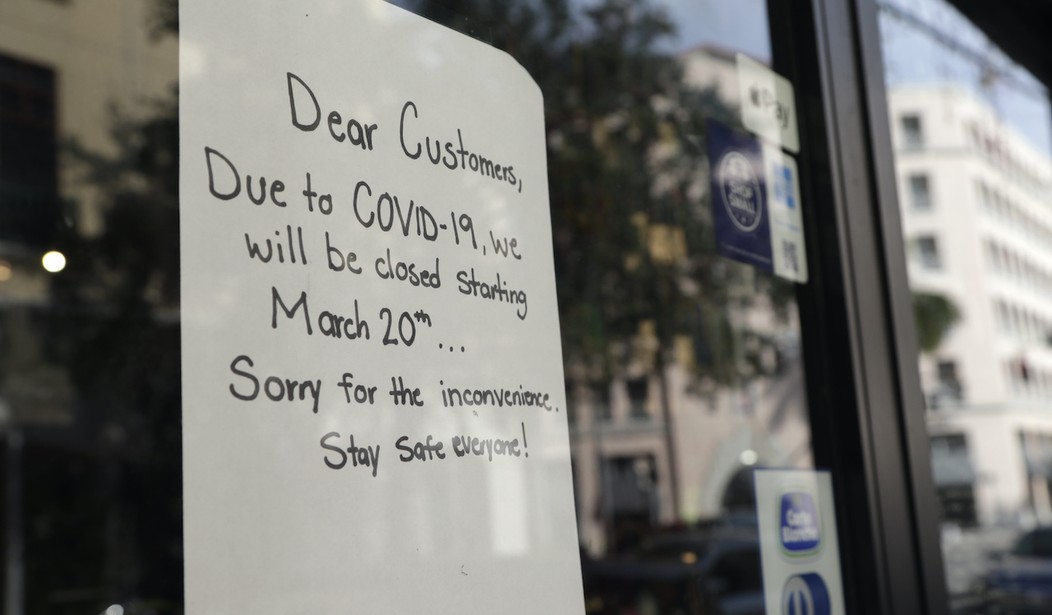MADISON — As bad as the Great Recession was, it pales in comparison to what we have seen so far in the pandemic-driven spring of discontent. And things will only get worse the longer Gov. Tony Evers locks down Wisconsin.
The latest analysis from the Center for Research on the Wisconsin Economy at the University of Wisconsin Madison (CROWE) shows the statewide unemployment rate hit 19.5 percent last week. That’s nearly double the 10 percent Great Recession jobless rate peak recorded in 2010. It’s significantly higher than the previous high-water mark — the 13.2 percent unemployment rate posted in February 1983, in the throes of the painful recession of the early 1980s.
The U.S. economy has shed 30 million jobs in just six weeks — north of 450,000 of those in Wisconsin.
And things only look to get worse from here.
“I wouldn’t be surprised if we go to 30 percent by the end of (May),” said Noah Williams, CROWE’s founding director and Juli Plant Grainger Professor of Economics at the UW-Madison. “The longer we stay closed the more unlikely it will be that many small businesses will be able to re-open.”
As CROWE’s most recent report notes, initial unemployment applications have fallen from the peak two weeks ago, but they continue to be at historically high levels — more than 12 times higher than what they were last year. It could be even higher. Legislative offices have heard from a growing number of constituents who have given up on trying to get through a clearly overmatched state Department of Workforce Development unemployment claims processing network.
Recommended
Now comes what Williams describes as the “secondary effects.” The first employees to be hit hard came from the hospitality industry, restaurants, bars and hotels in particular. In recent weeks, sectors such as manufacturing and, ironically, health care have seen growing numbers of furloughs and layoffs.
Last month, more than a third of Wisconsin businesses that responded to a Wisconsin Economic Development Corp. survey said they would be forced to close permanently, if the economic freeze goes on for more than three months.
Williams said 30 percent could actually be on the low side. Some surveys show as many as half of small businesses could close.
Kristine Hillmer, president and CEO of the Wisconsin Restaurant Association, has said 30 percent of the Badger State’s restaurants may not survive.
CROWE’s analysis of business over a good portion of the pandemic period shows foot traffic was down 50 percent — 60 percent during Easter Week. Online shopping has absorbed some of the losses, but total sales were down 15 percent in March, while in-store sales plummeted 30 percent.
Worse yet, the hardest hit regions are those that can least afford an economic downturn, Williams said.
“We’ve seen that regionally,” he said. “The northern counties have been hit less by the virus, but they tend to be the poorer areas that have seen the largest reduction in economic activity and higher rates of unemployment.” He pointed to Menominee County which has the highest poverty rate in the state. The county has seen a 20 percentage point increase in unemployment, a significant number for a region with a 26 percent poverty rate, Williams said.
Last week, dozens of business leaders testified before the Assembly Committee on State Affairs urging the re-opening of the state.
“At some point we have to deal with the difference between lives and livelihoods,” Troy Berg, owner of Dane Manufacturing, told the committee. “If we let this go much longer than the end of May, we’re not going to be here for the 1,400 people who work here (at his manufacturing plants).”

























Join the conversation as a VIP Member